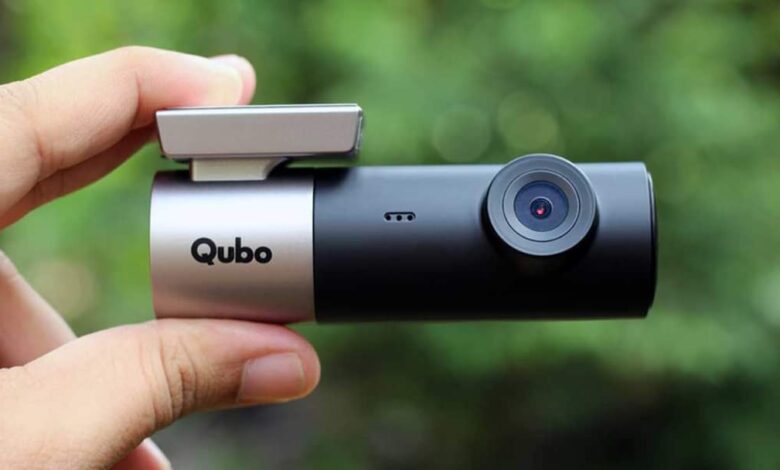The Ultimate Guide to CCVT Cameras: Enhancing Security and Peace of Mind
Types of CCVT Cameras: Exploring Versatility and Specialized Capabilities

The Ultimate Guide to CCVT Cameras: Enhancing Security and Peace of Mind
Introduction: In today’s rapidly evolving world, security has become an utmost priority for individuals and businesses alike. Whether it’s safeguarding our homes, offices, or public spaces, investing in a reliable surveillance system is crucial. Closed Circuit Television (CCTV) cameras have emerged as a popular choice due to their effectiveness in deterring criminal activities and providing valuable evidence. In this comprehensive guide, we will explore the features, benefits, and key considerations of CCVT cameras, empowering you to make an informed decision when it comes to securing your premises.
- Understanding CCVT Cameras:
- Definition and purpose of CCVT cameras
- How CCVT cameras differ from traditional security cameras
- The role of CCVT cameras in surveillance systems
- Types of CCVT Cameras:
- Dome cameras: discreet and versatile
- Bullet cameras: visible deterrent with long-range capabilities
- PTZ cameras: remote-controlled, offering pan, tilt, and zoom functions
- Day/night cameras: effective in low-light conditions
- Infrared (IR) cameras: capturing footage in complete darkness
- Key Features and Technologies:
- High-definition (HD) and Ultra HD resolution options
- Wide Dynamic Range (WDR) for balanced exposure in challenging lighting conditions
- Digital and optical zoom for capturing detailed images
- Infrared (IR) illumination for night vision capabilities
- Motion detection and intelligent video analytics
- Remote monitoring and access via mobile devices
- Benefits of CCVT Cameras:
- Deterrence: Visible cameras discourage criminal activities
- Enhanced surveillance: Monitor activities in real-time and review footage as needed
- Criminal identification and evidence: High-quality video footage for investigations
- Peace of mind: Round-the-clock monitoring and remote access capabilities
- Factors to Consider:
- Location and purpose: Identify areas requiring surveillance and specific requirements
- Resolution and image quality: Determine the level of detail needed
- Field of view: Coverage area and the appropriate camera type
- Connectivity and storage: Wired or wireless, and the storage capacity required
- Budget considerations: Balancing cost and quality
- Installation and Maintenance:
- Placement considerations for optimal coverage
- Professional installation vs. DIY options
- Regular maintenance and firmware updates for optimal performance
- Legal and Ethical Considerations:
- Familiarize yourself with local laws and regulations
- Respect for privacy and ethical use of surveillance systems
- Best Practices for CCVT Camera Usage:
- Positioning cameras for maximum effectiveness
- Protecting camera feeds and data
- Regularly reviewing and backing up recorded footage
Conclusion: Investing in a CCVT camera system is a proactive step towards enhancing security and ensuring the safety of your premises. By understanding the various types, features, and considerations associated with CCVT cameras, you can make an informed decision that aligns with your specific requirements. Remember to prioritize factors such as image quality, coverage area, and budget, while also adhering to legal and ethical guidelines. With a well-designed and properly maintained CCVT camera system, you can enjoy peace of mind and a heightened sense of security in an increasingly uncertain world.
CCVT Cameras: Enhancing Security and Surveillance
Introduction: In the realm of security and surveillance, CCVT (Closed Circuit Television) cameras have gained immense popularity due to their effectiveness in deterring criminal activities and providing valuable evidence. In this section, we will explore the definition and purpose of CCVT cameras, highlight their differences from traditional security cameras, and discuss their pivotal role in modern surveillance systems.
- Definition and Purpose of CCVT Cameras: CCVT cameras, also known as closed-circuit television cameras, are video surveillance cameras designed to capture and record video footage in a closed circuit. The term “closed circuit” implies that the video feed from the cameras is transmitted to a specific set of monitors or recording devices, rather than being publicly broadcasted.
The primary purpose of CCVT cameras is to monitor and record activities in both public and private spaces, enhancing security measures and deterring potential crimes. They act as vigilant eyes, providing a visual record of events that can be used for investigations, evidence in legal proceedings, and general monitoring of areas where they are installed.
- How CCVT Cameras Differ from Traditional Security Cameras: While CCVT cameras and traditional security cameras serve the common purpose of capturing video footage, there are significant differences between the two:
Closed Circuit: CCVT cameras operate in a closed circuit, meaning the video signals are transmitted to a limited number of monitors or recording devices, usually located in a control room or a restricted access area. Traditional security cameras, on the other hand, may transmit their video feed wirelessly or over the internet to a wider audience or cloud storage.
Analog vs. Digital: Historically, CCVT cameras used analog technology, transmitting video signals in analog format over coaxial cables. However, with the advent of digital technology, modern CCVT cameras now utilize digital video formats and IP (Internet Protocol) networks for transmission, offering higher resolution and advanced features.
Recording and Storage: CCVT cameras typically connect to a digital video recorder (DVR) or network video recorder (NVR) that stores the recorded footage locally. Traditional security cameras often rely on cloud-based storage or other remote storage options.
- The Role of CCVT Cameras in Surveillance Systems: CCVT cameras play a pivotal role in comprehensive surveillance systems by providing the following benefits:
Deterrence: The mere presence of CCVT cameras acts as a deterrent to potential criminals, as they are aware that their actions are being monitored and recorded, increasing the risk of identification and apprehension.
Real-time Monitoring: CCVT cameras enable live monitoring of events and activities in the surveillance area. Security personnel or operators can observe the video feed in real-time, allowing for immediate response to suspicious or concerning situations.
Evidence Collection: In the event of an incident, CCVT camera footage serves as crucial evidence for investigations, providing clear visual documentation of events. This evidence can be used by law enforcement agencies, insurance companies, and other relevant parties.
Crime Prevention: By actively monitoring areas with CCVT cameras, security personnel can detect and prevent criminal activities in real-time. Suspicious behaviors or unauthorized access can be identified promptly, allowing for immediate action.
Post-Incident Analysis: Recorded CCVT footage allows for thorough post-incident analysis, helping to understand the sequence of events, identify perpetrators, and improve security measures for the future.
Conclusion: CCVT cameras serve as powerful tools for enhancing security and surveillance in various settings. Their ability to deter criminal activities, provide visual evidence, and enable real-time monitoring makes them indispensable components of modern security systems. Understanding the differences between CCVT cameras and traditional security cameras, along with their vital role in surveillance systems, empowers individuals and businesses to make informed decisions when it comes to protecting their premises and assets.
Types of CCVT Cameras: Exploring Versatility and Specialized Capabilities
CCVT (Closed Circuit Television) cameras come in various types, each designed to cater to specific surveillance needs. Understanding the different types of CCVT cameras empowers users to choose the most suitable option for their security requirements. In this section, we will explore some common types of CCVT cameras and their unique features and capabilities.
- Dome Cameras: Dome cameras are among the most popular and versatile choices for surveillance. They are characterized by their dome-shaped housing, which conceals the direction the camera is facing, adding a layer of discreetness. Key features of dome cameras include:
- Discreet Design: The dome-shaped housing makes it difficult for individuals to determine the exact direction the camera is pointing, enhancing their effectiveness as a surveillance tool.
- Versatile Installation: Dome cameras can be mounted on ceilings or walls, making them suitable for a wide range of indoor and outdoor applications.
- Vandal-Resistant Options: Some dome cameras offer vandal-resistant features, protecting them from tampering or damage in high-risk environments.
- Bullet Cameras: Bullet cameras are known for their distinctive cylindrical shape and are often installed in areas where a visible deterrent is desired. Key features of bullet cameras include:
- Visible Deterrence: The visible presence of bullet cameras acts as a deterrent to potential criminals, signaling that the area is under surveillance.
- Long-Range Capabilities: Bullet cameras are designed to capture footage over longer distances, making them ideal for monitoring parking lots, large outdoor spaces, or perimeters.
- Weatherproofing: Many bullet cameras come with weatherproof housings, enabling them to withstand various environmental conditions.
- PTZ Cameras: PTZ (Pan-Tilt-Zoom) cameras offer exceptional flexibility and control over surveillance operations. These cameras can be remotely controlled, allowing users to adjust their viewing angles, pan horizontally, tilt vertically, and zoom in and out. Key features of PTZ cameras include:
- Pan, Tilt, and Zoom Functions: PTZ cameras provide the ability to rotate horizontally (pan), adjust the vertical angle (tilt), and zoom in or out, offering a wide coverage area and the ability to focus on specific points of interest.
- Remote Control: Operators can remotely control PTZ cameras, adjusting their movements and zoom levels to track objects or events in real-time.
- Preset Positions: PTZ cameras can be programmed with preset positions, allowing for automated monitoring of specific areas or predefined routes.
- Day/Night Cameras: Day/night cameras are specifically designed to deliver high-quality surveillance footage in challenging lighting conditions, including low-light or no-light situations. Key features of day/night cameras include:
- Enhanced Low-Light Performance: Day/night cameras use advanced imaging technologies, such as wide dynamic range (WDR) and infrared (IR) illumination, to capture clear and detailed images in low-light environments.
- Switching Modes: Day/night cameras can automatically switch between color mode during daylight and black-and-white mode with infrared illumination during nighttime or low-light conditions.
- IR Cut Filters: These filters help to improve image quality by reducing the effects of infrared light during the day, ensuring accurate color reproduction.
- Infrared (IR) Cameras: Infrared (IR) cameras are specifically designed to capture surveillance footage in complete darkness. They use infrared lighting to illuminate the scene, which is invisible to the human eye but detectable by the camera’s image sensor. Key features of infrared cameras include:
- Night Vision Capabilities: Infrared cameras can capture clear images in environments with no visible light, making them ideal for scenarios requiring around-the-clock surveillance.
- IR Illuminators: Infrared cameras are equipped with built-in or external IR illuminators that emit infrared light, which is
Key Features and Technologies of CCVT Cameras: Enhancing Surveillance Capabilities
CCVT (Closed Circuit Television) cameras have evolved significantly over the years, incorporating advanced features and technologies to provide enhanced surveillance capabilities. In this section, we will explore some key features and technologies found in modern CCVT cameras, empowering users to make informed decisions when selecting a camera for their security needs.
- High-Definition (HD) and Ultra HD Resolution Options: CCVT cameras now offer high-definition (HD) and ultra HD resolution options, providing superior image quality and clarity. Higher resolutions, such as 1080p or 4K, enable the capture of finer details, making it easier to identify faces, objects, or license plate numbers in recorded footage.
- Wide Dynamic Range (WDR): Wide Dynamic Range (WDR) technology ensures balanced exposure in challenging lighting conditions, where there may be a significant difference between bright and dark areas within the camera’s field of view. By automatically adjusting the exposure levels, WDR enables cameras to capture clear images with improved visibility of details in both bright and dark areas.
- Digital and Optical Zoom: CCVT cameras are equipped with digital and optical zoom capabilities to capture detailed images of objects or areas of interest. Digital zoom involves enlarging a portion of the image electronically, but it may result in a loss of image quality. Optical zoom, on the other hand, uses the lens to adjust the focal length, allowing for a magnified view without sacrificing image quality.
- Infrared (IR) Illumination for Night Vision: Infrared (IR) illumination is a crucial feature for CCVT cameras intended for night vision. IR cameras utilize built-in or external IR illuminators to emit infrared light that is invisible to the human eye but detectable by the camera’s image sensor. This technology enables cameras to capture clear images even in complete darkness, extending surveillance capabilities around the clock.
- Motion Detection and Intelligent Video Analytics: CCVT cameras equipped with motion detection capabilities can detect changes in the camera’s field of view and trigger specific actions, such as sending alerts or starting recording when motion is detected. Intelligent video analytics further enhance surveillance capabilities by enabling cameras to analyze video footage in real-time, detecting specific events or behaviors automatically. This includes features such as facial recognition, object tracking, intrusion detection, and people counting.
- Remote Monitoring and Access via Mobile Devices: Modern CCVT cameras offer remote monitoring and access capabilities, allowing users to view live footage, playback recorded videos, and manage camera settings remotely. This can be achieved through dedicated software or mobile applications compatible with smartphones and tablets. Remote access enables users to stay connected to their surveillance system, enhancing flexibility and convenience.
By considering these key features and technologies, users can select CCVT cameras that align with their specific surveillance requirements. Whether it’s capturing high-resolution images, ensuring visibility in challenging lighting conditions, or utilizing intelligent analytics, these features contribute to a comprehensive and efficient security system.
Benefits of CCVT Cameras: Strengthening Security and Peace of Mind
CCVT (Closed Circuit Television) cameras have become integral components of modern security systems due to their numerous benefits. In this section, we will explore the advantages of CCVT cameras, highlighting their role in deterring criminal activities, enhancing surveillance capabilities, providing evidence for investigations, and ensuring peace of mind for users.
- Deterrence: CCVT cameras act as a powerful deterrent to potential criminals. The visible presence of cameras sends a clear message that the area is under surveillance. Knowing that their actions are being recorded and monitored significantly reduces the likelihood of criminal activities, such as theft, vandalism, or unauthorized access. The mere presence of CCVT cameras can create a sense of unease for potential wrongdoers, prompting them to reconsider their actions.
- Enhanced Surveillance: CCVT cameras enable real-time monitoring of activities within the camera’s field of view. Security personnel or users can observe the video feed in real-time, allowing them to promptly identify and respond to suspicious behaviors or incidents. The ability to monitor activities in real-time provides an added layer of security, allowing for immediate intervention when necessary.
Additionally, CCVT cameras allow for the review of recorded footage, enabling users to analyze past events, detect patterns, or identify potential security vulnerabilities. This retrospective surveillance capability is invaluable in investigating incidents and making informed decisions regarding security measures.
- Criminal Identification and Evidence: High-quality video footage captured by CCVT cameras serves as vital evidence in identifying and apprehending criminals. The clear and detailed images provided by CCVT cameras can assist law enforcement agencies in identifying suspects, establishing timelines, and gathering evidence for legal proceedings. This visual evidence enhances the chances of successful investigations, leading to improved outcomes and increased community safety.
- Peace of Mind: CCVT cameras offer round-the-clock monitoring, providing users with a heightened sense of security and peace of mind. Whether it’s monitoring a residential property, workplace, or public space, CCVT cameras can operate continuously, ensuring ongoing surveillance even during non-business hours or when users are away. The knowledge that their premises are being monitored can help individuals and businesses feel more secure and protected.
Furthermore, remote access capabilities allow users to monitor their CCVT cameras from anywhere, anytime. Through mobile devices or remote access software, users can check live video feeds, review recorded footage, and manage camera settings remotely. This feature provides convenience and peace of mind, allowing users to stay connected to their security system and respond promptly to any potential issues or emergencies.
In conclusion, the benefits of CCVT cameras are far-reaching. They act as a deterrent to criminal activities, enhance surveillance capabilities, provide valuable evidence for investigations, and offer peace of mind through round-the-clock monitoring and remote access capabilities. By leveraging the power of CCVT cameras, individuals and businesses can significantly strengthen their security measures and ensure the safety of their premises and assets.
Factors to Consider When Choosing CCVT Cameras: Making Informed Decisions
Selecting the right CCVT (Closed Circuit Television) cameras for your surveillance needs involves considering various factors. By assessing factors such as the location and purpose of surveillance, resolution and image quality requirements, field of view, connectivity and storage options, as well as budget considerations, you can make informed decisions and choose cameras that align with your specific needs. Let’s explore these factors in detail:
- Location and Purpose: Identify the areas that require surveillance and determine the specific requirements for each location. Consider whether the cameras will be used indoors or outdoors, and if they will be exposed to harsh weather conditions. Additionally, assess the purpose of surveillance, such as deterring criminal activities, monitoring high-traffic areas, or ensuring the safety of specific assets or individuals.
- Resolution and Image Quality: Determine the level of detail needed for your surveillance purposes. Higher resolution cameras, such as those offering HD or Ultra HD options, capture finer details, making it easier to identify faces, objects, or license plate numbers. Consider the specific requirements of your surveillance application and select cameras that provide the appropriate image quality.
- Field of View: Evaluate the coverage area of each camera to ensure that it adequately monitors the intended space. Consider the viewing angle and the distance the camera can capture effectively. Different camera types, such as dome cameras, bullet cameras, or PTZ cameras, offer varying field-of-view capabilities. Select the camera type that best suits the surveillance requirements of each location.
- Connectivity and Storage: Consider the connectivity options that suit your needs. CCVT cameras can be wired or wireless. Wired cameras offer a reliable and consistent connection, while wireless cameras provide flexibility in installation and ease of relocation. Assess the availability of power sources and network infrastructure to determine the appropriate connectivity option.
In terms of storage, consider the amount of recorded footage you need to retain and the duration for which it should be stored. CCVT cameras typically connect to a digital video recorder (DVR) or network video recorder (NVR) for local storage. Ensure that the chosen storage capacity aligns with your surveillance requirements.
- Budget Considerations: Balancing cost and quality is an important aspect when selecting CCVT cameras. Set a budget based on your specific needs and explore options within that range. It is essential to strike a balance between affordability and the desired features and capabilities. Consider factors such as camera quality, resolution, additional features, and ongoing maintenance costs when evaluating the budget.
By considering these factors, you can make well-informed decisions when selecting CCVT cameras that best suit your surveillance needs. It is advisable to consult with security professionals or experts who can provide guidance based on their expertise and experience. This ensures that you choose the most suitable cameras to enhance your security measures effectively.
Installation and Maintenance of CCVT Cameras: Ensuring Optimal Performance
Proper installation and regular maintenance are crucial for maximizing the effectiveness of your CCVT (Closed Circuit Television) cameras. Considerations such as optimal camera placement, the choice between professional installation and DIY options, as well as regular maintenance and firmware updates, play a significant role in ensuring optimal performance. Let’s delve into these aspects in more detail:
- Placement Considerations for Optimal Coverage: To achieve the best coverage and surveillance effectiveness, careful consideration should be given to the placement of CCVT cameras. Some key placement considerations include:
- Strategic Locations: Identify areas that require monitoring and determine the best camera placement to capture the desired field of view. Consider angles, potential blind spots, and the specific surveillance requirements of each area.
- Height and Angle: Install cameras at an appropriate height and angle to ensure optimal coverage and minimize obstructions. Adjust the camera position to capture the desired area effectively.
- Lighting Conditions: Take into account the lighting conditions in the area. Avoid placing cameras directly facing bright lights or reflective surfaces, as they may affect image quality.
- Professional Installation vs. DIY Options: Deciding between professional installation and DIY options depends on factors such as the complexity of the installation, your technical expertise, and the scope of the surveillance system. Consider the following:
- Professional Installation: Opting for professional installation ensures that the cameras are correctly positioned, cables are properly installed, and the system is set up for optimal performance. Professionals can also provide valuable insights on camera placement and system configuration based on their experience and expertise.
- DIY Options: DIY installation may be suitable for smaller, less complex systems or if you have the necessary technical knowledge. It involves understanding the installation process, properly mounting cameras, running cables, and configuring the system. Be sure to follow manufacturer guidelines and seek assistance if needed.
- Regular Maintenance and Firmware Updates: Regular maintenance is essential to keep CCVT cameras in optimal working condition. Consider the following maintenance practices:
- Cleaning: Periodically clean camera lenses to remove dust, dirt, or smudges that may impact image quality. Use a soft cloth or lens cleaner specifically designed for camera lenses.
- Cable Check: Inspect cables for any signs of wear, damage, or loose connections. Replace or repair cables as necessary to maintain a reliable connection.
- Firmware Updates: Manufacturers often release firmware updates that enhance camera performance, address security vulnerabilities, or introduce new features. Regularly check for firmware updates and follow the manufacturer’s instructions to ensure your cameras are running the latest software.
By paying attention to these installation and maintenance considerations, you can optimize the performance of your CCVT cameras. This helps ensure that your surveillance system operates at its best, providing reliable and effective monitoring for your security needs.
Legal and Ethical Considerations for CCVT Camera Usage: Respecting Privacy and Compliance
When deploying CCVT (Closed Circuit Television) cameras, it is essential to be aware of the legal and ethical considerations surrounding their use. By familiarizing yourself with local laws and regulations and ensuring the ethical use of surveillance systems, you can maintain compliance and respect privacy rights. Let’s explore these considerations in more detail:
- Familiarize Yourself with Local Laws and Regulations: Different jurisdictions may have specific laws and regulations governing the use of CCVT cameras. It is crucial to familiarize yourself with these laws to ensure compliance. Key areas to consider may include:
- Consent and Notification: Understand whether consent or notification is required before installing CCVT cameras, especially in public or semi-public areas.
- Recording and Retention: Be aware of any limitations or restrictions on recording and retaining footage, including specific data protection requirements.
- Usage and Access: Understand who has access to the surveillance footage, including authorized personnel and law enforcement, and the purposes for which the footage can be used.
- Privacy Protection: Consider any privacy protection laws that may be in place, including guidelines for handling and securing recorded footage.
Consulting with legal professionals or relevant authorities can provide guidance specific to your location and ensure compliance with local laws and regulations.
- Respect for Privacy and Ethical Use of Surveillance Systems: Respecting privacy and maintaining ethical use of CCVT cameras is crucial. Consider the following principles:
- Proportionality: Ensure that the use of CCVT cameras is proportional to the intended security purpose. Install cameras only in areas where surveillance is necessary and justified.
- Avoiding Intrusion: Be mindful of avoiding unnecessary intrusion into private spaces, such as residential areas or restrooms, to protect individuals’ privacy rights.
- Data Security: Implement appropriate measures to secure the surveillance footage, such as encrypted storage and restricted access to prevent unauthorized use or data breaches.
- Transparency and Communication: Clearly communicate the presence of CCVT cameras through signage or other means to inform individuals that surveillance is in place. Transparent communication fosters trust and helps individuals understand the purpose and scope of the surveillance system.
Regularly review and reassess the usage of CCVT cameras to ensure ongoing compliance with legal requirements and ethical standards. Additionally, consider establishing internal policies and guidelines for the proper use of the surveillance system to maintain ethical practices.
By adhering to legal requirements, respecting privacy rights, and promoting ethical use of CCVT cameras, you can strike a balance between maintaining security and safeguarding individual privacy. This approach ensures responsible and lawful deployment of surveillance systems within your premises or public spaces.
arewanahiya.com







